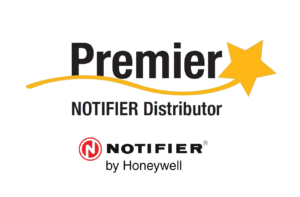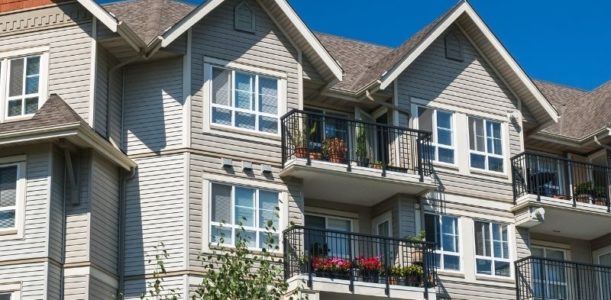
There are some basic principles when protecting private living spaces in larger commercial buildings. However, it does get tricky when other protection elements are needed.
Note the use of Smoke Alarms in comparison to Smoke Detectors. Smoke Alarms are UL 217 residential units where as Smoke Detectors are supervised UL 268 sensors for use with fire panels.
The basics: Sprinklered Building
- A hardwired smoke alarm is required in each bedroom. Most codes require combination 120Vac with 9Volt battery alarms in these applications
- A hardwired smoke alarm in required in the hallway with 15 feet of bedroom doors
- Hallway device shall be a combination smoke/carbon monoxide alarm if fossil burning appliances exist in the unit or on the floor
- Install a smoke alarm on every floor if the living unit spans multiple floors
- Interconnect all smoke or CO alarms so they all sound if activated
- Do not electrically connect to the base building fire alarm panel
- Do not tandemly interconnect with smoke alarms or CO alarms with adjacent apartments
- When the building has a Fire Alarm System
- Audibility must comply with 15 decibels above ambient noise level throughout the living space
- Per NFPA 72 2007 (and all current versions) edition, Sound in all sleeping rooms must be low frequency, 520Hz
- The DB sound level in the bedroom must be 75db measured at the pillow
- System horns or speakers in apartment must activate from base building fire alarm system from a water flow alarm, manual station, heat detection in building, smoke detector in building or other common area system type initiation devices
- Normally, Apartment smoke alarms do not activate the base building fire alarm system. Be aware, there may be exception to this practice. The AHJ may have other opinions whether to activate the fire alarm system from residential smoke alarms or not
- In non sprinklered or common wood construction buildings, system heat detection may be requested in the living unit with full alarm tie in to the base building fire alarm system
- As an option, code also allows for the use of System Addressable Smoke Detectors with sounders in these applications. The programmability allows for local operation or base building activation. Further, many newer addressable smoke detectors have optional isolated heat detection features to support both local protection with confirmed fire signaling back into the supervised fire alarm system
- Similar, there are also addressable smoke detectors that support isolate carbon monoxide signaling for similar sequences of alarm activations
When ADA Compliancy Is Required
Both NFPA101, IBC, National and Local adaptability standards have statements on how to meet the minimums for living units to be both ADA equipped or adaptable to accommodate potential users having special visual or audible needs.
Refer to IBC 907.5.2.3.3 and 907.5.2.3.4 for the correct number of fixed apartments to be equipped with strobes or apartment made to be adaptable for future installation if needed.
- When installing ADA strobes in private living units
- Strobes are required in the bedrooms, common living area and bathrooms
- Strobes in sleeping areas shall be of the high candela type, 110 or 177 candela based on placement to the bed. See NFPA 72 18.5.5.7.2
- Strobes should turn on from the apartment smoke alarm or base building fire alarm system. Note, there is no code requiring the strobes to turn on from the carbon monoxide detector, however the AHJ may feel otherwise
- The strobe can be a combination Horn/Strobe or Speaker/Strobe
- ADA apartment or Adaptable apartment must still meet the required audible sound levels
Adaptable Units
In some cases such as R-2 buildings, you may not have to install strobes in anticipated Ada apartments. Chapter 907.5.2.3.4 of IBC makes reference to Type A and Type B units defined by ICC A117.1 to be made adaptable only.
When complying with adaptable requirements, code says you only need to provide raceways, electrical boxes and electrical infrastructure so that the potential need to install strobes is easily accomplish. Wiring and power for possible strobes must be brought into the closest smoke detector serving the apartment with available conduits serving both bedrooms, bathrooms and common living area.
Normally potential future ADA adaptable apartments will require their own circuitry from the fire alarm power distribution. ADA apartments will require to turn on separately from the hallway devices.
If you wish to obtain other information on how to best protect private space contact High Rise Security Systems for discussion or other supporting materials.



